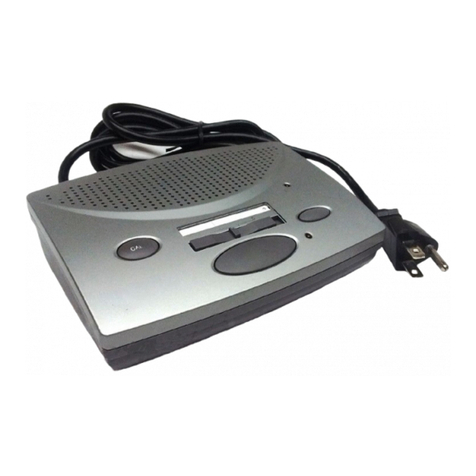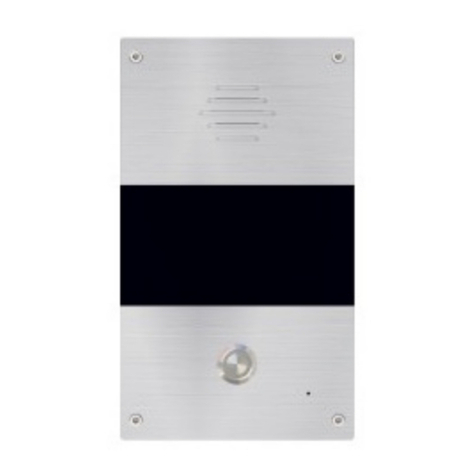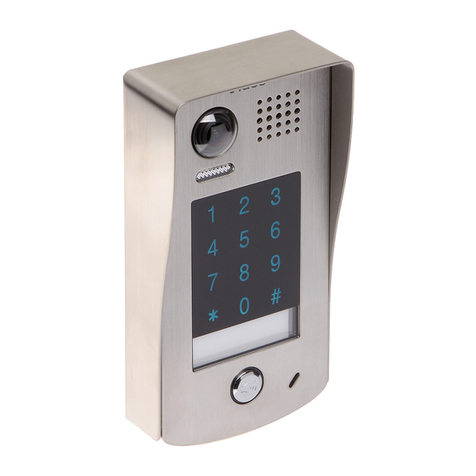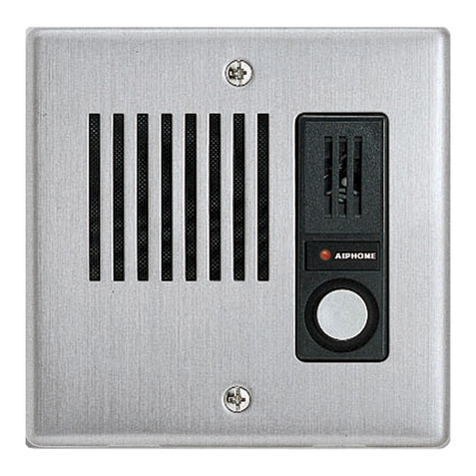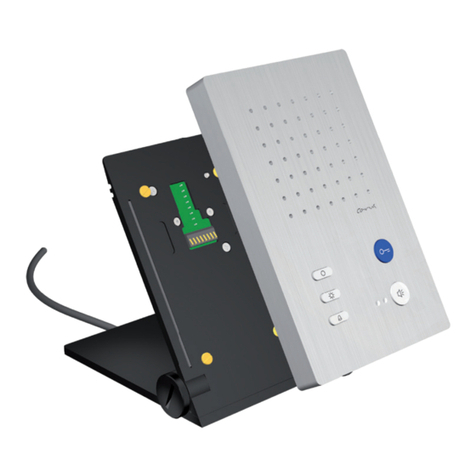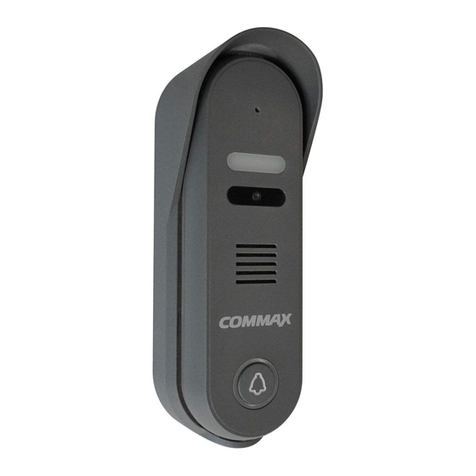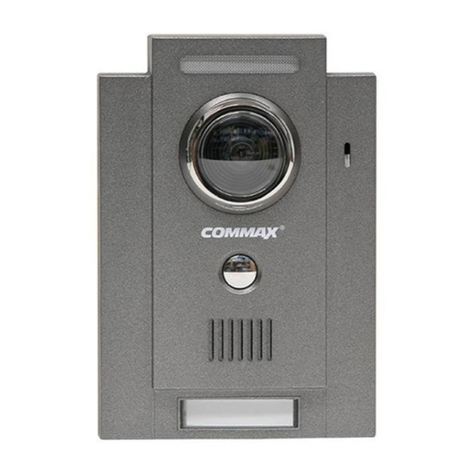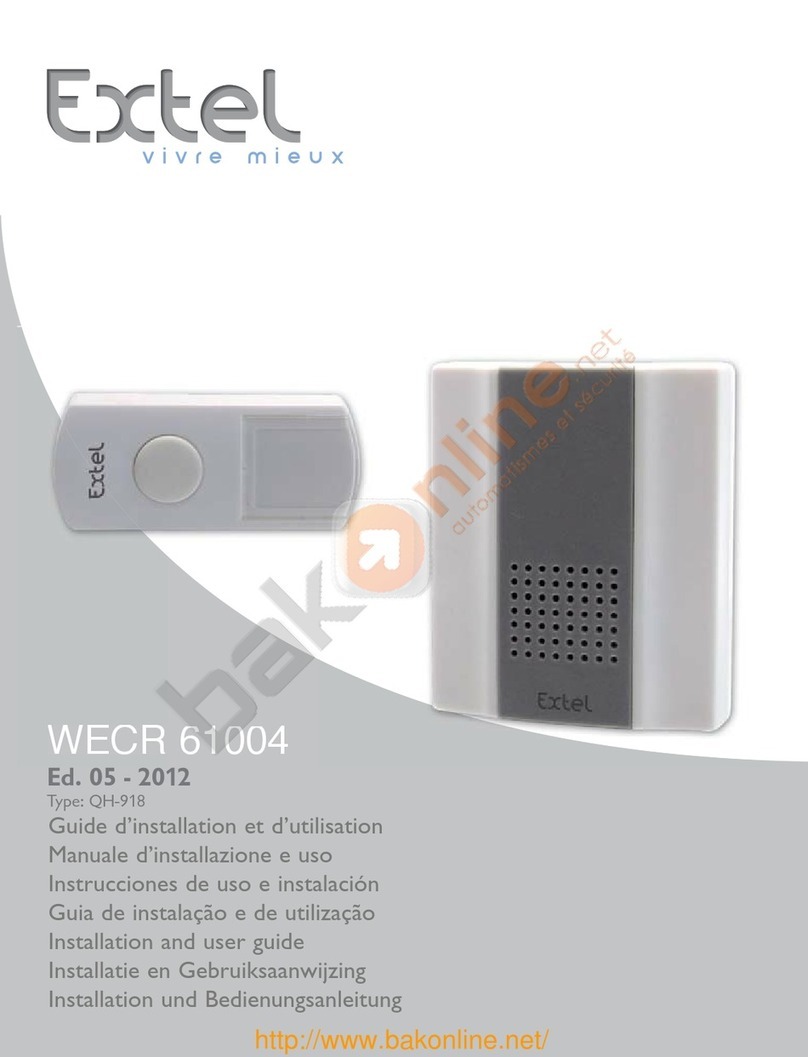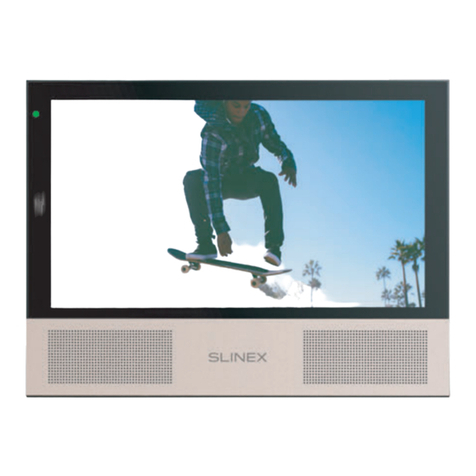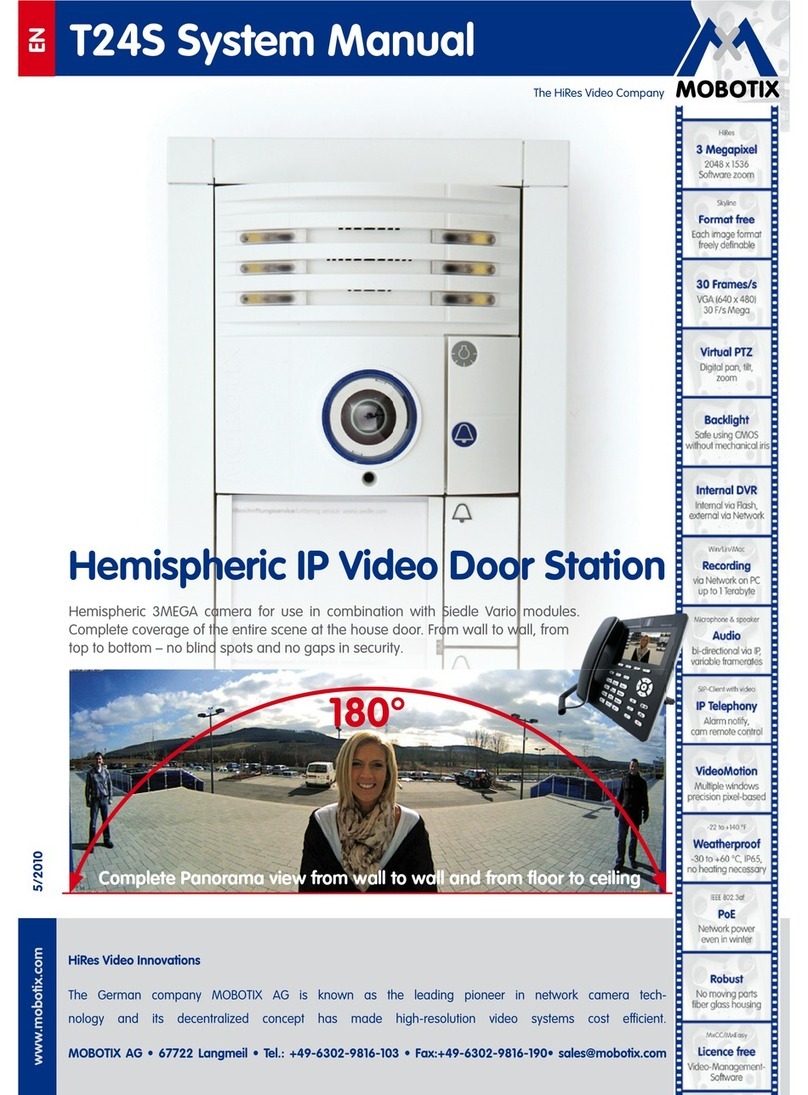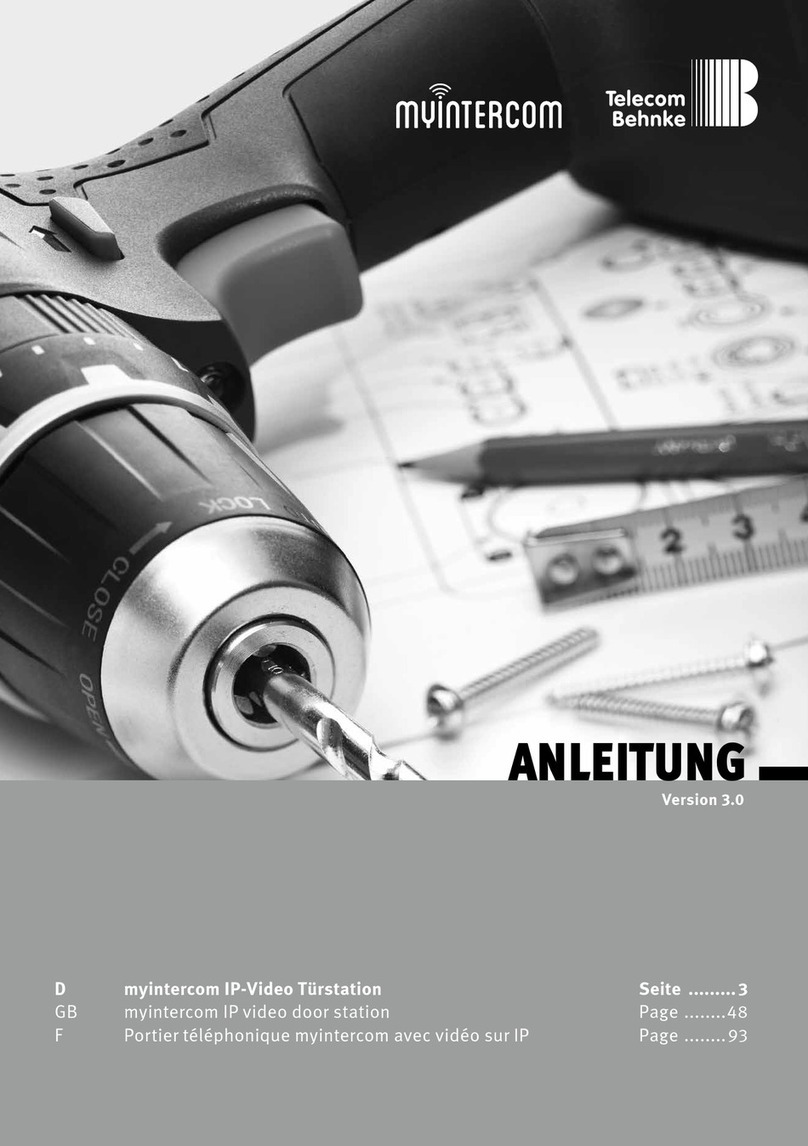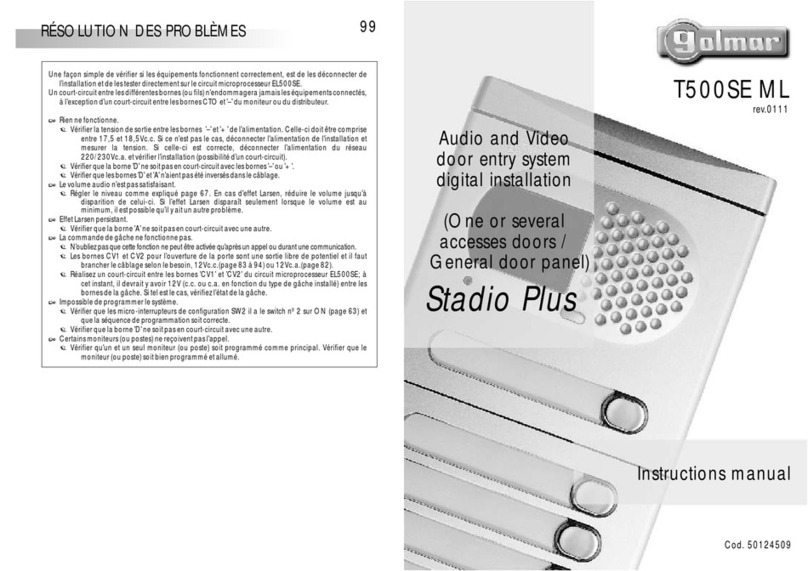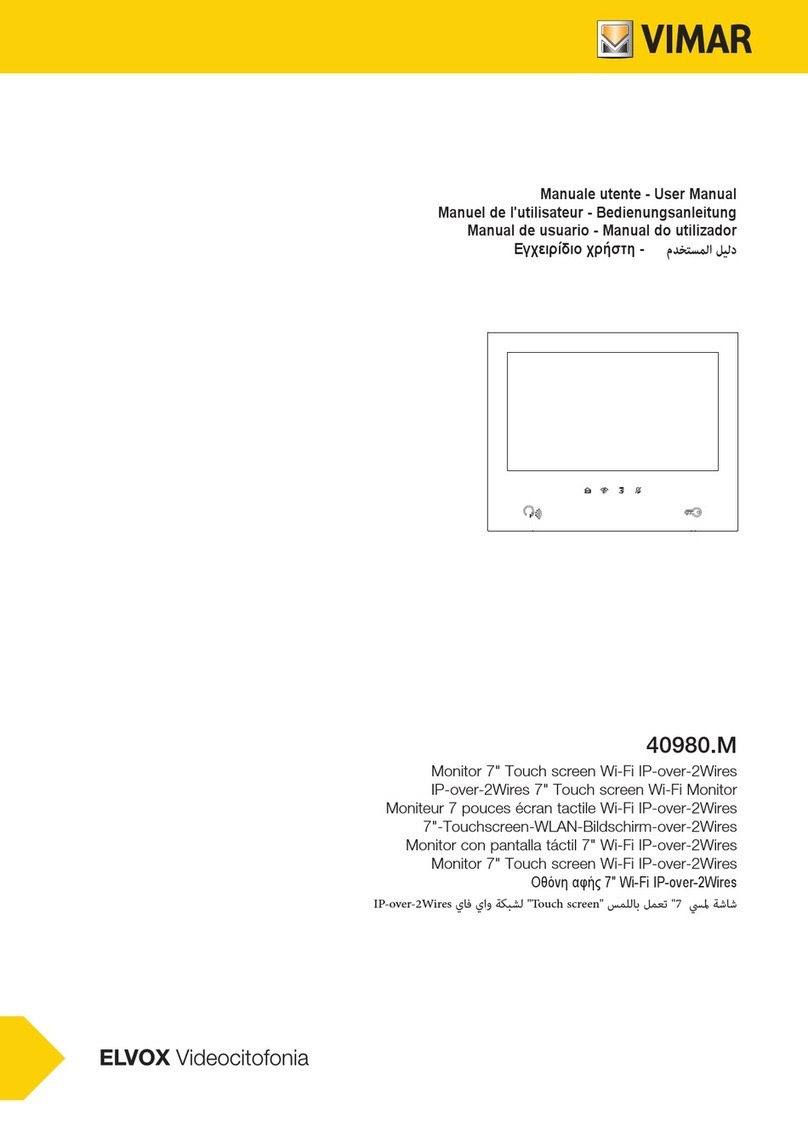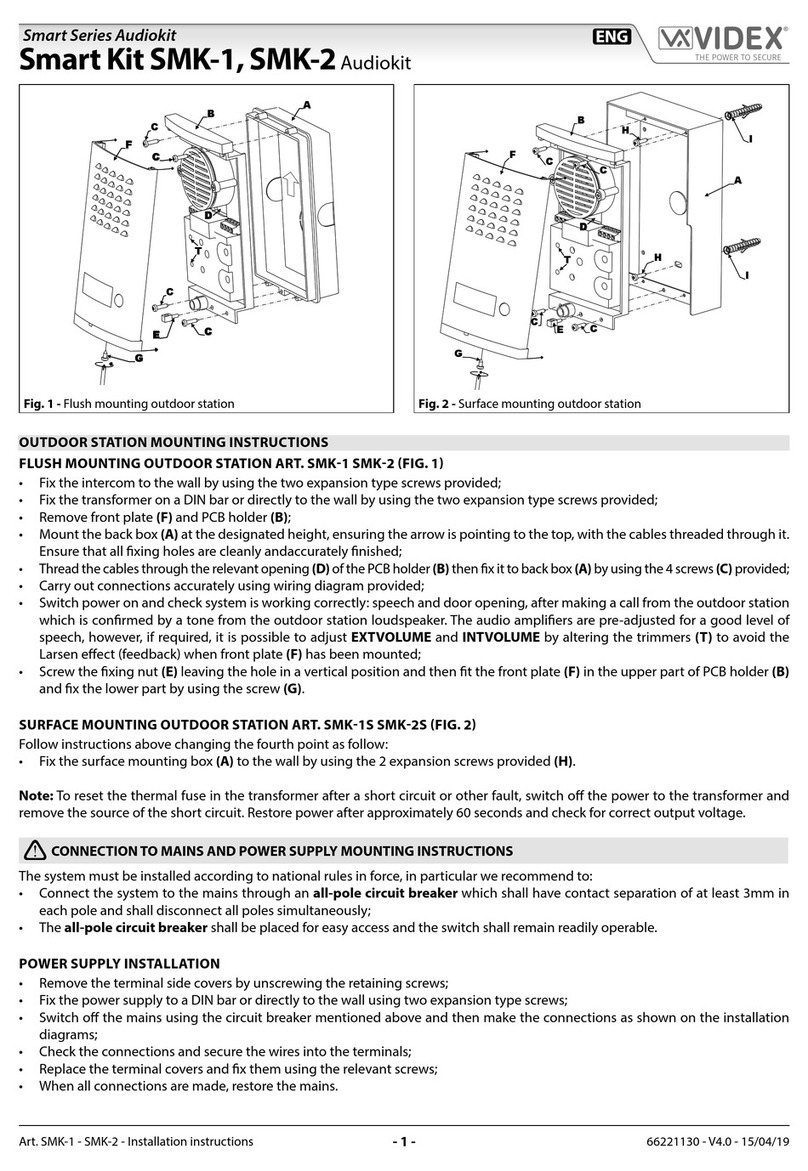Lippert Components 7500 Series User manual

7500 Series
Sliding Patio Door
OEM INSTALLATION MANUAL

Rev: 09.11.20 Page 2 CCD-0002742
TABLE OF CONTENTS
Introduction 2
Safety 2
Resources Required 2
Preparation 3
Installation 4
Screen Door 7
Post-Installation Check 9
The "WARNING" symbol above is a sign that a procedure has a safety risk involved and may cause death
or serious personal injury if not performed safely and within the parameters set forth in this manual.
Failure to follow instructions provided in this manual may result in death, serious personal injury
and/or severe product and property damage, including voiding of the component warranty.
Always wear eye protection when performing service, maintenance or installation procedures.
Other safety equipment to consider would be hearing protection, gloves and possibly a full face
shield, depending on the nature of the task.
• Cordless or electric drill or screw gun
• Appropriate drive bits
• Tape Measure
• Square
• Sealant, gunnable or tape (putty or butyl type)
Sealant should be high quality, water-resistant,
non-hardening.
• Level
• Fasteners - Any of the fasteners listed below can
be used for installation.
• 6D smooth shank nails
• 6D ring shank nails
• #8 pan head screws
• 16 gauge adhesive coated staples ⁄" crown
The “CAUTION” symbol above is a sign that a safety risk is involved and may cause personal injury and/or
product or property damage if not safely adhered to and within the parameters set forthin this manual.
Moving parts can pinch, crush or cut. Keep clear and use caution.
Introduction
The 7500 Series Sliding Patio Door comes fully assembled. There are two versions available, one for curbside
installation and one for roadside installation. The fixed panel of the sliding door should be towards the front
of the unit.
Safety
Read and understand all instructions before installing or operating this product. Adhere to all safety labels.
This manual provides general instructions. Many variables can change the circumstances of the instructions,
i.e., the degree of difficulty, operation and ability of the individual performing the instructions. This
manual cannot begin to plot out instructions for every possibility, but provides the general instructions,
as necessary, for effectively interfacing with the device, product or system. Failure to correctly follow the
provided instructions may result in death, serious personal injury, severe product and/or property damage.
Resources Required

Rev: 09.11.20 Page 3 CCD-0002742
Call Size Net Frame Size Recommended Rough Opening
6' 0" x 6' 4" 71 1/2" x 75 1/2" 72" x 76"
6' 0" x 6' 8" 71 1/2" x 79 1/2" 72" x 80"
8' 0" x 6' 4" 95 1/2" x 75 1/2" 96" x 76"
8' 0" x 6' 8" 95 1/2" x 79 1/2" 96" x 80"
Preparation
1. Check rough opening. DO NOT install the door unless the rough opening is correct.
Fig. 1
2. Check rough opening width and height at three points. There should be no more than 1/8" variation
between these measurements (Fig. 1)
3. Check squareness of the rough opening. Measure the opening two ways diagonally. Diagonal
measurement will be the same if the opening is square and the variation does not exceed 1/4" (Fig. 2).
Fig. 2

Rev: 09.11.20 Page 4 CCD-0002742
2. Place door into rough opening, then center the door in the opening, making sure it is square in the
opening. Level the frame sill (Fig. 3B) and shim if necessary.
NOTE: Keep the moving panel closed and locked during installation.
3. Drive the first fastener in to the mounting flange, at approximately the center of the frame sill (Fig. 3B).
All fasteners installed from the exterior of the unit. Square and plumb the jambs (Fig. 3C). Then, drive a
fastener in to the mounting flange at each jamb, approximately at midpoint. Align frame head (Fig. 3D)
and secure with a fastener in to the mounting flange, approximately at midpoint.
1. Apply a 1/8" thick, suitable, good-quality, non-hardening water-resistant sealant tape (putty or butyl
type) to the full perimeter of the backside of the mounting flange (Fig. 3A). If a gunnable sealant is
used, a minimum 1/4" bead should be applied. The bead should be centered over the mounting holes
on the interior surface of the mounting flange.
NOTE: The use of foam tapes is not recommended for door installation.
Installation
There are roadside and curbside versions of this door assembly. Make sure that the correct door is being
installed in the unit. The fixed panel side of the door assembly should be towards the front of the unit.
Fig. 3
A
NOTE: Green line (Fig 3A) indicates where to apply tape or sealant
at backside of flange, prior to installation.
Inside view, roadside installation, no screen installed
Front
of unit
B
C
D
Do not use a sealant that contains solvents that may chemically attack vinyl.
Fixed
Panel
Backside
of flange
Head
Sill
Jambs
Sliding
Panel

Rev: 09.11.20 Page 5 CCD-0002742
4. Shim around the jambs as necessary and drive rest of the fasteners through all the holes provided
around the perimeter (Fig. 4A). Screws, nails or staples may be used for the installation, but the
fastener must penetrate the stud at least 1", allowing for exterior sheathing. The pre-punched
mounting holes in the flanges are to assist when using #8 pan head screw fasteners.
5. Adjust rollers in the moving panel by turning the screw inside the hole (Fig. 5A) at the bottom of the
moving panel with a Phillips head screwdriver. When adjusting the rollers, lift up on the panel to take
the load off the adjusting screw. Move the rollers either up or down until the panel has an even reveal
at the lock side frame jamb (Fig. 4B) and/or fixed meeting rail (Fig. 4C).
Fig. 4
Outside View, roadside installation, no screen installed
A
B
C
D
Fig. 5
A
The drill should be adjusted so that there is not excessive dimpling or fracturing of the mounting
anges, which could cause distortion of the door frame.
Any fastener that is left exposed to the weather shall be of a plated type that will not corrode.
Fixed
Panel
Sliding
Panel
Front
of unit

Rev: 09.11.20 Page 6 CCD-0002742
6. Shim between wall studs and the door frame behind the lock keeper (Fig. 4D). Remove the two #8 x
1/2" Phillips pan head (PPH) screws from the lock keeper and discard.
7. Install the four provided #10 x 2 1/2" PPH screws into the striker (Fig. 6A) and lock keeper (Fig. 6B) into
the door frame. Make sure the lock engages the keeper properly and make necessary adjustments by
moving the lock keeper up or down.
Fig. 6
8. Seal the entire perimeter of the door with a good quality sealant (Fig. 7).
AB
Fig. 7
Outside view, roadside installation, no screen installed
NOTE: Green line indicates
where to apply sealant

Rev: 09.11.20 Page 7 CCD-0002742
9. After the door has been installed, the perimeter of the mounting flange should be covered with siding
material. Leave a gap between the edge of the siding material (Fig. 8A) and the door frame (Fig. 8B) to
allow for siding expansion and contraction.
Outside view, roadside installation, no screen installed
Gap
B
A
Fig. 8
Screen Door
1. Make sure the sliding screen handle is on the same side as the sliding door handle. Rotate the screen
door if necessary. The handle lever should face the outside.
2. Remove bug sweep (Fig 9A) from the edge of the screen door.
A
Fig. 9

Rev: 09.11.20 Page 8 CCD-0002742
3. Fit the screen door (Fig. 10A) into the top sill track (Fig. 10B) of the sliding door frame.
Fig. 10
4. Once the screen in the top sill track, lift the bottom of the screen (Fig. 11A) with a putty knife or similar
flat-blade tool (Fig. 11B). Make sure the putty knife goes under each wheel in the door and lift it onto
the sill guide rail.
NOTE: The bottom rollers must sit on the rail for the screen door to function properly.
5. Test the screen door to make sure it opens and closes smoothly.
A
B
A
B
Fig. 11

Rev: 09.11.20 Page 9 CCD-0002742
A A
Post-installation Check
After installation, check the following for functionality:
1. Slide the door open and closed to make sure there is no binding of the door. If the door is not opening
correctly, re-check that the door frame is square in the opening.
2. Check the locking mechanism to make sure it is correctly aligned and works properly. If necessary,
adjust the striker and lock keeper.
6. If the screen door needs to be adjusted, adjust the height of the rollers by adjusting the screws at the
top and bottom of the screen (Fig. 12A).
Fig. 13
B
7. Attach the bug sweep by pressing it into the bug sweep channel. Trim the excess where the bug
sweep is flush with the bottom of the screen.
8. With the latch handle in the up position, mark where the bottom of the latch rests (Fig 13A) on the side
of the screen door. Close the screen almost completely and mark that same location on the patio door
frame (Fig. 13B).
9. Align the latch hook so that the top of the hook is even with the mark made on the patio door frame (Fig 13C).
10. Attach one screw (Fig. 13D) in to the oblong slot. Adjust until the screen door latches, then drill a
second pilot hole and attach the second screw (Fig. 13E).
E
D
A
C
Fig. 12

The contents of this manual are proprietary and copyright protected by Lippert Components, Inc. (LCI).
LCI prohibits the copying or dissemination of portions of this manual unless prior written consent from an
authorized LCI representative has been provided. Any unauthorized use shall void any applicable warranty.
The information contained in this manual is subject to change without notice and at the sole discretion of LCI.
Revised editions are available for free download from lci1.com.
Please recycle all obsolete materials.
For all concerns or questions, please contact
Lippert Components, Inc.
Other Lippert Components Intercom System manuals

